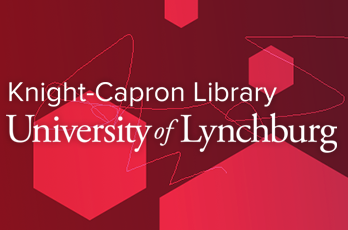Whore, Horror, and History: How Monstrous Women in Horror are Defined by the Monsters Before Them
Location
Access Type
Campus Access Only
Entry Number
31
Start Date
4-7-2021 2:45 PM
End Date
4-7-2021 3:00 PM
Department
English
Abstract
Whore, Horror, and History looks at how the portrayal of women in the horror novels Carrie, Rosemary’s Baby, and The Haunting of Hill House impacts societal expectations of gender and furthers gender stereotypes. Specifically, it takes a look at how women often serve as horrific mothers in Horror and, consequently, are victimized by their womanhood. Moreover, Whore, Horror, and History looks at how generational traumas of womanhood and motherhood in the horror genre are passed down to daughters, perpetuating the cycle of monstrosities. It is important to assess how literature can impact the view of women and can shape how society interprets the role of women, particularly in high-pressure scenarios. The ways that popular literature can affect opinions and values, as well as how the portrayal of women in horrific literature reflects toxic maternal relationships, can provide insight into the role of literature in society and how it reflects and creates relationships between women. Furthermore, the progression of the genre’s portrayal of women is important to look at, as it could illustrate the empowerment of female horror characters throughout the years, as well as how portrayals still fall short. The research question, then, is how does popular horrific literature portray women, and how does that portrayal affirm or perpetuate stereotypes and expectations of women? Moreover, how does it reflect the generational traumas women experience and how do readers and authors sympathize with or criticize that trauma? The research in Whore, Horror, and History concludes that women in several popular horror novels are portrayed as terrorizing mother-figures and often play the victim role within the novel, due to their role as mother and as woman. These portrayals reflect past and present stereotypes of women, as well as the ways in which trauma can be passed down from woman to woman.
Primary Faculty Mentor(s)
Dr. Beth SavageDr. Michael RobinsonDr. Laura Kicklighter
Rights Statement
The right to download or print any portion of this material is granted by the copyright owner only for personal or educational use. The author/creator retains all proprietary rights, including copyright ownership. Any editing, other reproduction or other use of this material by any means requires the express written permission of the copyright owner. Except as provided above, or for any other use that is allowed by fair use (Title 17, §107 U.S.C.), you may not reproduce, republish, post, transmit or distribute any material from this web site in any physical or digital form without the permission of the copyright owner of the material.
Whore, Horror, and History: How Monstrous Women in Horror are Defined by the Monsters Before Them
Whore, Horror, and History looks at how the portrayal of women in the horror novels Carrie, Rosemary’s Baby, and The Haunting of Hill House impacts societal expectations of gender and furthers gender stereotypes. Specifically, it takes a look at how women often serve as horrific mothers in Horror and, consequently, are victimized by their womanhood. Moreover, Whore, Horror, and History looks at how generational traumas of womanhood and motherhood in the horror genre are passed down to daughters, perpetuating the cycle of monstrosities. It is important to assess how literature can impact the view of women and can shape how society interprets the role of women, particularly in high-pressure scenarios. The ways that popular literature can affect opinions and values, as well as how the portrayal of women in horrific literature reflects toxic maternal relationships, can provide insight into the role of literature in society and how it reflects and creates relationships between women. Furthermore, the progression of the genre’s portrayal of women is important to look at, as it could illustrate the empowerment of female horror characters throughout the years, as well as how portrayals still fall short. The research question, then, is how does popular horrific literature portray women, and how does that portrayal affirm or perpetuate stereotypes and expectations of women? Moreover, how does it reflect the generational traumas women experience and how do readers and authors sympathize with or criticize that trauma? The research in Whore, Horror, and History concludes that women in several popular horror novels are portrayed as terrorizing mother-figures and often play the victim role within the novel, due to their role as mother and as woman. These portrayals reflect past and present stereotypes of women, as well as the ways in which trauma can be passed down from woman to woman.


